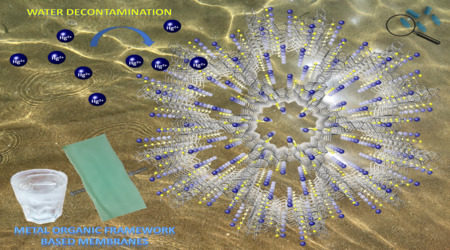The mercury removal efficiency of a novel metal‐organic framework (MOF) derived from the amino acid S‐methyl‐L‐cysteine is presented and the process is characterized by single‐crystal X‐ray crystallography. A feasibility study is further presented on the performance of this MOF—and also that of another MOF derived from the amino acid L‐methionine—when used as the sorbent in mixed matrix membranes (MMMs). These MOF‐based MMMs exhibit high efficiency and selectivity—in both static and dynamic regimes—in the removal of Hg2+ from aqueous environments, due to the high density of thioalkyl groups decorating MOF channels. Both MMMs are capable to reduce different concentration of the pollutant to acceptable limits for drinking water (<2 parts per billion). In addition, a novel device, consisting of the recirculation and adsorption of contaminated solutions through the MOF–MMMs, is designed and successfully explored in the selective capture of Hg2+. Thus, filtration of Hg2+ solutions with multiple passes through the permeation cell shows a gradual decrease of the pollutant concentration. These results suggest that MOF‐based MMMs can be implemented in water remediation, helping to reduce either contaminants from accidental unauthorized or deliberate metal industrial dumping and to ensure access for clean and potable freshwater.

